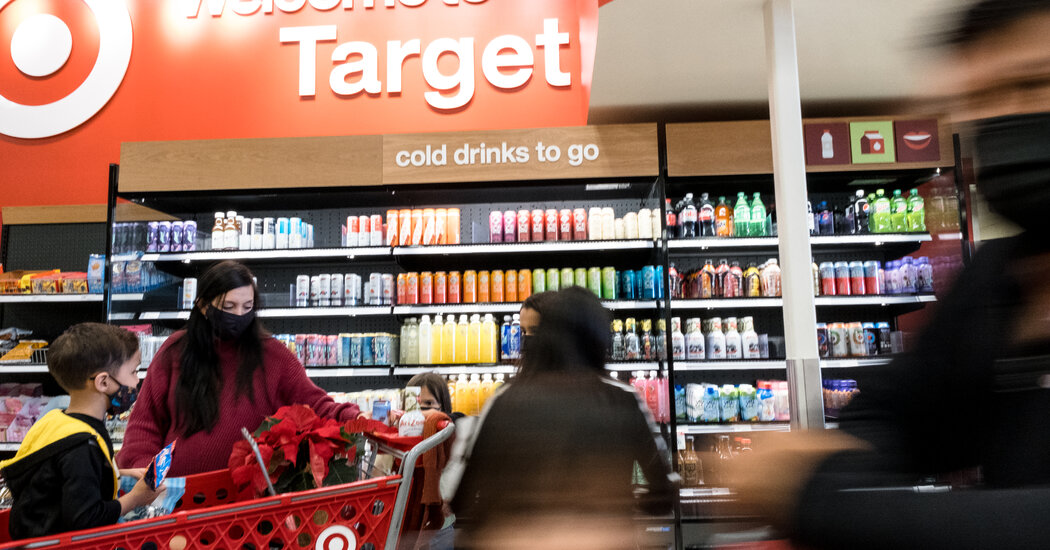
Target plans to cut prices and cancel orders to clear out unwanted inventory, announcing a series of steps on Tuesday to combat inflation and supply chain disruptions. The actions would cut its profit in the current quarter, the company said, pushing its shares down. Target’s share price closed down 2.4 percent.
It is the latest move by a major retailer revealing how inflation and shifts in consumer habits are swiftly changing the outlook for business. Just three weeks ago, Target shocked investors with earnings that were much worse than expected, leading its shares to fall nearly 25 percent. It cut its forecast for profit then, and lowered it even further on Tuesday.
Target, like many retailers that faced skyrocketing demand in the early months of the pandemic, stocked up on goods as snarled supply chains delayed shipments. But consumers are now turning away from goods like furniture, appliances and other products for staying home and shifting to spending more on experiences and going out.
Target’s ballooning inventory reflects a mix of merchandise that hasn’t — or can’t, for supply chain reasons — keep up with this shift. “Trends have changed rapidly since the beginning of the year,” the company said in its statement. It said it planned to add storage capacity near ports to hold more goods and open more distribution centers to “add flexibility and speed” in its supply chain.
“It’s certainly a surprise,” said Michael Baker, a managing director and senior retail analyst at D.A. Davidson. “Not only were they over-inventoried — a lot of their competitors were over-inventoried as well, and that’s what they misjudged.”
Because other big-box stores are now also trying to slash inventory, Target is “going to have to be aggressive with markdowns,” he added.
Even President Biden weighed in on Target’s travails, saying in a statement mostly about the trade deficit that “one of the nation’s largest retailers announced that it will take swift action to lower prices for certain goods,” playing up the potential effect that the company’s markdowns may have on reducing stubbornly high inflation. (He left unsaid the impact on Target’s profit margins.)
Target’s warning on Tuesday followed its disappointing earnings report last month, in which an unexpectedly large rise in inventory played a role. That came shortly after Walmart announced similarly downbeat earnings, dented by higher labor and fuel costs. Those reports helped spark a decline in the S&P 500 that dragged it down briefly into bear market territory, defined as a fall of 20 percent from a recent peak.
Stocks have recovered somewhat since then, and on Tuesday the markets appeared more resilient than they were when Target announced its earlier profit warning: After an initial wobble, the S&P 500 ended the day slightly higher. Mr. Baker sensed a hint of optimism in investors’ reaction, with Target’s stock avoiding the nosedive it took before and the broader market seemingly taking the news in stride.
There have also been some promising signs for retailers: Discounters and brands that serve higher-income shoppers have recently reported earnings that beat Wall Street’s expectations, suggesting that companies in the middle are most at risk of getting squeezed. Dollar Tree and Dollar General upgraded their forecasts for the year as shoppers sought lower prices and traded down from more expensive brands. At the same time, Nordstrom said shoppers were updating their wardrobes with clothes for “long-awaited occasions,” and Macy’s said sales of luxury goods were strong.




